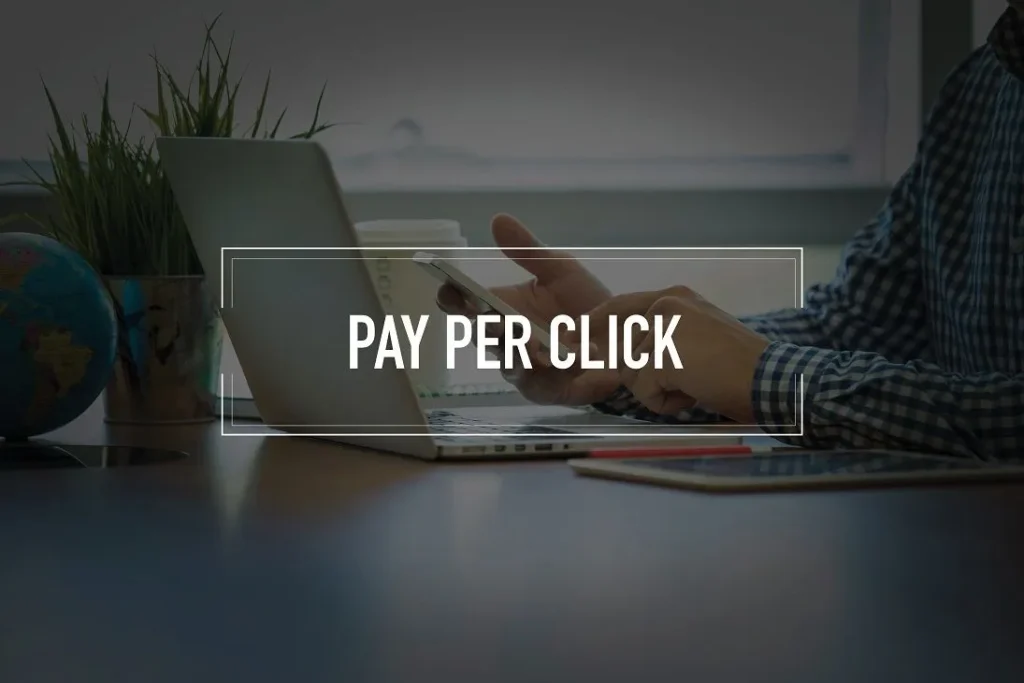In today’s highly competitive digital landscape, businesses must find effective ways to stand out and reach their target audience. Pay-Per-Click (PPC) advertising has become one of the most powerful tools for driving targeted traffic to websites, generating leads, and boosting sales. Whether you’re a small business or an enterprise, PPC offers a direct and measurable way to advertise online.
This blog will delve into the world of PPC advertising, exploring what it is, how it works, its benefits, and how businesses can harness its potential to grow and succeed in a digital-first world.
What is Pay-Per-Click (PPC) Advertising?

Pay-Per-Click (PPC) is an online advertising model where advertisers pay a fee each time one of their ads is clicked. Essentially, it’s a way of buying visits to your site rather than earning them organically through methods like Search Engine Optimization (SEO). In PPC, you bid on specific keywords or phrases relevant to your business, and when users search for those keywords, your ad may appear at the top of the search results.
PPC ads appear on search engines like Google, Bing, or Yahoo, as well as on social media platforms like Facebook, Instagram, and LinkedIn. These ads can take the form of text ads, display ads, or shopping ads, depending on the platform and the campaign’s goals.
The most popular platform for PPC advertising is Google Ads (formerly known as Google AdWords), followed by Bing Ads and social media advertising platforms like Facebook Ads and Instagram Ads.
How Does PPC Work?
PPC advertising works through an auction-based system. Advertisers bid on specific keywords they want to target in their campaigns. When a user searches for one of those keywords, the auction determines which ads will appear based on various factors, including:
- Keyword Relevance: The ad’s relevance to the search query.
- Bid Amount: The amount the advertiser is willing to pay per click.
- Quality Score: A rating Google or other platforms give ads based on their relevance, quality, and user experience.
- Landing Page Experience: How relevant and useful the landing page is to the user’s search.
Once the auction is complete, the winning ads are displayed in the search results or on the platform where the PPC campaign is being run. The advertiser only pays when the user clicks on the ad—hence the term Pay-Per-Click.
Types of PPC Advertising
There are several types of PPC advertising that businesses can leverage, depending on their goals and the platforms they use:

1. Search Ads
Search ads are text-based ads that appear at the top or bottom of search engine results pages (SERPs) when users search for keywords related to the business. These ads are commonly used for local businesses, e-commerce sites, or any business looking to target users actively searching for products or services similar to what they offer.
2. Display Ads
Display ads are graphical ads that appear on websites, blogs, or apps. These ads can be in the form of banners, sidebars, or pop-ups. Display ads are great for brand awareness because they target users based on their browsing history, demographics, and interests.
3. Shopping Ads
Shopping ads are typically used by e-commerce businesses to showcase products directly on search engine result pages. These ads include a product image, price, and store name, giving users more visual information about what’s being offered. Shopping ads appear when users search for specific products.
4. Social Media Ads
PPC ads on social media platforms like Facebook, Instagram, Twitter, LinkedIn, and others allow businesses to target users based on their interests, demographics, location, and behavior. Social media ads can be highly engaging and interactive, making them effective for both brand awareness and conversion campaigns.
5. Video Ads
Platforms like YouTube offer video PPC ads, which can be skippable or non-skippable. These video ads are shown before, during, or after video content and allow businesses to engage users with dynamic and creative content.
Benefits of Pay-Per-Click Advertising
PPC advertising offers several benefits for businesses looking to drive traffic and boost sales. Here are some key advantages:
1. Instant Traffic
Unlike SEO, which can take time to show results, PPC provides immediate visibility. Once your campaign is live, your ads can start appearing on search engine results pages, driving instant traffic to your website. This is especially beneficial for new businesses or those with time-sensitive offers.
2. Targeted Reach
PPC advertising allows businesses to target specific keywords, demographics, locations, devices, and times of day, ensuring that your ads are reaching the right people. With PPC, you can create highly targeted campaigns that speak directly to your ideal audience, leading to higher quality leads and conversions.
3. Cost Control and Flexibility
With Pay-Per-Click, you set your own budget. You can adjust your bid amounts, allocate more budget to high-performing campaigns, or pause ads that aren’t performing well. This level of flexibility ensures that you’re only paying for ads that deliver results, and you can continuously optimize your campaigns to get the best return on investment (ROI).
4. Measurable Results
One of the biggest advantages of Pay-Per-Click advertising is the ability to measure and track results in real-time. Platforms like Google Ads provide detailed analytics that show you how your ads are performing. You can track metrics such as clicks, impressions, conversion rates, and cost-per-conversion, allowing you to refine your strategies and improve performance.
5. Brand Visibility
Even if users don’t click on your PPC ads immediately, they still see your brand name and products. This increased visibility can help build brand recognition over time. For example, Pay-Per-Click ads on Google and social media platforms expose your business to users who might not have encountered your brand otherwise.
Key PPC Metrics to Track
To ensure your Pay-Per-Click campaigns are successful, it’s important to monitor and analyze the right metrics. Here are some key performance indicators (KPIs) to keep an eye on:
1. Click-Through Rate (CTR)
CTR is the percentage of people who click on your ad after seeing it. A high CTR indicates that your ads are relevant and engaging to your target audience.
2. Cost Per Click (CPC)
CPC is the amount you pay each time someone clicks on your ad. Monitoring CPC helps ensure that your budget is being spent effectively and that you’re getting good value for each click.
3. Conversion Rate
Conversion rate measures the percentage of visitors who take the desired action on your website, such as making a purchase, filling out a form, or signing up for a newsletter. A high conversion rate indicates that your ads are bringing in valuable traffic.
4. Quality Score
Google assigns a Quality Score to each of your ads based on relevance, expected CTR, and landing page experience. Ads with a higher Quality Score tend to rank better and cost less per click, making it an important metric to monitor.
5. Return on Investment (ROI)
ROI is the ultimate measure of success for any Pay-Per-Click campaign. It calculates how much profit you’ve made compared to how much you’ve spent on ads. A positive ROI indicates that your Pay-Per-Click campaign is delivering results and generating revenue.
Best Practices for PPC Campaigns
To maximize the effectiveness of your PPC campaigns, consider the following best practices:
-
Keyword Research: Thorough keyword research is the foundation of any successful Pay-Per-Click campaign. Use keyword tools like Google Keyword Planner to find high-converting keywords that are relevant to your business.
-
Ad Copy Optimization: Write compelling ad copy that highlights your unique selling points and encourages users to click. Make sure your ads match the intent of your target keywords.
-
Landing Page Optimization: Ensure that your landing page is relevant to the ad, loads quickly, and provides a clear call-to-action. A seamless user experience on the landing page improves your conversion rate.
-
A/B Testing: Continuously test different versions of your ads, landing pages, and calls to action to see which performs best. A/B testing allows you to fine-tune your campaigns and improve results over time.
-
Monitor and Adjust: Regularly monitor your campaign performance and make adjustments as needed. Pause underperforming ads, reallocate your budget to high-performing campaigns, and experiment with new keywords.
Conclusion
Pay-Per-Click (PPC) advertising is an invaluable tool for businesses looking to drive targeted traffic, generate leads, and increase sales. Its immediate results, flexibility, and ability to target specific audiences make it a must-have in any digital marketing strategy. However, successful PPC campaigns require careful planning, continuous optimization, and a strong understanding of key metrics.
By understanding how PPC(pay per click) works, the different types of ads, and the best practices for running campaigns, businesses can harness the full potential of PPC {pay per click}advertising to achieve significant growth and success in the digital world.
Also read : The Fundamentals of Digital Marketing: A Beginner’s Guide

